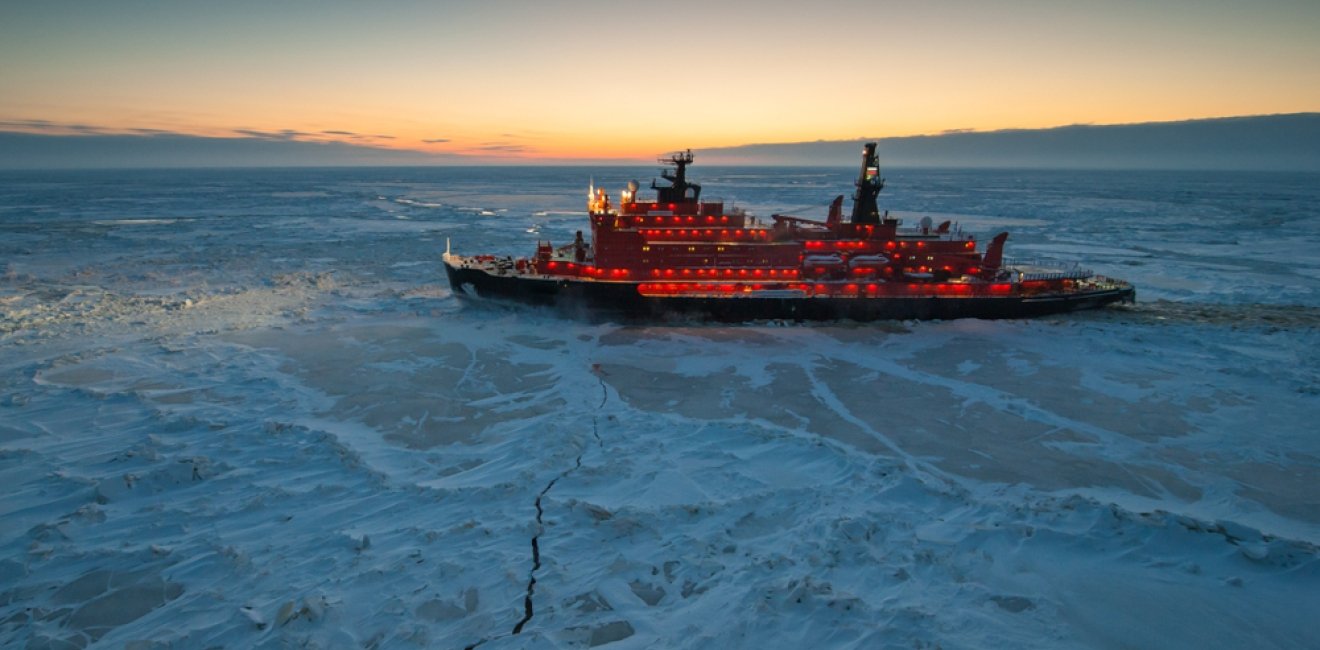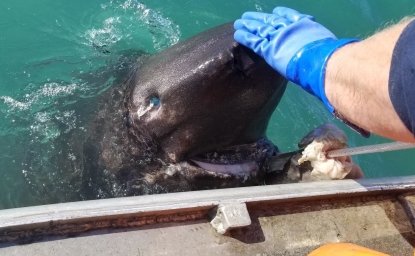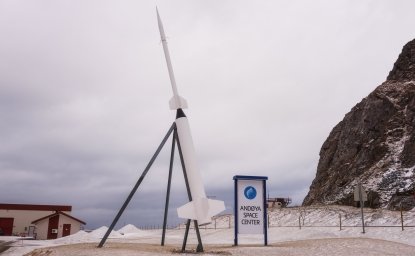Russia updated its Maritime Doctrine in July 2022, setting out its strategic priorities. The Arctic Zone of the Russian Federation (AZRF) features prominently: internal and adjacent waters along the AZRF and the Northern Sea Route (NSR) are referred to as ‘vital areas of national interest’.
The Doctrine describes the Arctic in Russia’s now-standard terms for the region - as a ‘strategic resource base’ for economic and energy development - as well as setting the exploitation of the NSR as a national priority. The Doctrine also states the need for increased marine scientific research, which is often code for hidden military activity. However, in the context of Russia’s war against Ukraine, several features relating to the Arctic stand out.
A Dystopian Arctic Development
The Doctrine exposes a major disconnect between officially stated goals and the reality of the AZRF. Indeed, it sets out ambitious plans for Russia’s presence and the development of the Arctic’s economic potential.
It mentions, for instance, the modernization and construction of a new fleet of Arctic-capable surface vessels as well as port and coastal infrastructure along the AZRF. The key question is: where will the funding come from? National ambitions will undoubtedly be limited by international sanctions and Russia’s isolation. Furthermore, the exploitation of natural resources in Russia’s Arctic is restricted by the current energy standoff and the lack of access to Western technology and capital investment.
Meanwhile, the idea of using the NSR as a ‘year-round’ transportation route does not take account of the non-linear nature of climate change in the coming decades. The Kremlin must also address the more pressing need to manage the impact of climate change on human development and regional infrastructure.
The Doctrine is even more disconnected from reality regarding technology, with Moscow intending to form an ‘industrial, technological and scientific base’ for the AZRF. This means the deployment of satellite and digital technologies, autonomous sensor stations, and unmanned underwater vehicles in the Arctic, among other systems. Another priority is the construction of a trans-Arctic fibre-optic cable that is supposed to connect civilian and military installations across the AZRF.
However, again, Russia’s war in Ukraine has drastically reduced the capabilities of its IT and STEM sectors, which is impeding the development of the aforementioned ‘technological and scientific base’ and will make them even more resource-intensive to produce. The Kremlin might consequently have to rely more on China to achieve its ambitions.
Increased Military Presence and Activities
The 2022 Maritime Doctrine is blunt about the perceived threat to national security in the Arctic: the irrational fear of encirclement by NATO as well as US and NATO presence and activities close to the AZRF.
However, there is nothing new in Moscow’s Arctic posture: the Doctrine mentions the need to improve the combat readiness of the Northern and Pacific Fleets, procure advanced weapons systems, and, as Chatham House research has shown, exert more control over foreign military activity in the sea and air approaches in the Arctic. In essence, this will translate into increased military exercises and weapons tests, as well as more below-the-threshold activities - including underwater cable cutting.
Demonstrations of access and presence in the Russian Arctic have become routine. For instance, Moscow’s latest provocative action, in late August, was a Kalibr missile test during the passage of a Karakurt-class corvette between the Baltic Sea and the White Sea. Nevertheless, Russia’s military messaging heightens the risk of miscalculation and tactical errors in the Arctic, particularly in the European High North.
Another important feature of the Doctrine is civilian-military cooperation in the Arctic, notably the use of civilian vessels (especially icebreakers) for military operations, as well as potentially equipping civilian escort icebreakers with weapons. This would be further proof that Russia is approaching the Arctic in fundamentally dual-use terms - from the procurement of maritime assets to the integration of a range of stakeholders.
Moscow’s Obsession with Arctic Control
The updated Maritime Doctrine enshrines the appropriation and the exploitation of the Northern Sea Route as an uncontested Russian waterway under Moscow’s tight control. Indeed, the Doctrine (wrongly) refers to a ‘legal regime of inland sea water’ along the NSR.
In other words, Russia is trying to establish the NSR as an internal body of water no longer ruled by the Law of the Sea under freedom of navigation principles. In doing so, Moscow reinforces its own, contestable extension of control over the surface of ice-covered waters along the AZRF under the ‘Ice clause’ (Article 234 of UNCLOS). Russia’s interpretation of UNCLOS, however, is now constrained by seasonal sea-ice reduction.
In parallel, Russia is looking to extend its sovereign rights over the seabed along the AZRF. The 2022 Doctrine mentions the ‘full-scale development of the continental shelf of the Russian Federation beyond the 200-mile exclusive economic zone’. The Doctrine also acknowledges that it must be carried out only after the outer limit of the Russian continental shelf is delimitated under the United Nations Commission on the Limits of the Continental Shelf (UNCLCS). The Commission is currently reviewing Russia’s 2016 claim: an unfavourable ruling could antagonise Moscow even more, with the risk of increasing regional tension.
Russia’s obsessive quest for control is also driven by the fact that control over the NSR is key to defending North Pole approaches from the perceived threat of NATO and US military activities in the region.
The updated Maritime Doctrine reflects Moscow’s systematic contestation of foreign presence close to the AZRF and channels its contestable control over the Northern Sea Route. It further recalls that Russia views the Arctic as a strategic continuum - from the North Atlantic to the North Pacific – and displays its willingness to impose costs on foreign access to the AZRF and beyond. Western policymakers must keep these facts in mind to obtain a comprehensive picture of Russia’s Arctic intentions.
Mathieu Boulegue is a Senior Research Fellow with the Russia and Eurasia Programme at Chatham House – The Royal Institute of International Affairs.







